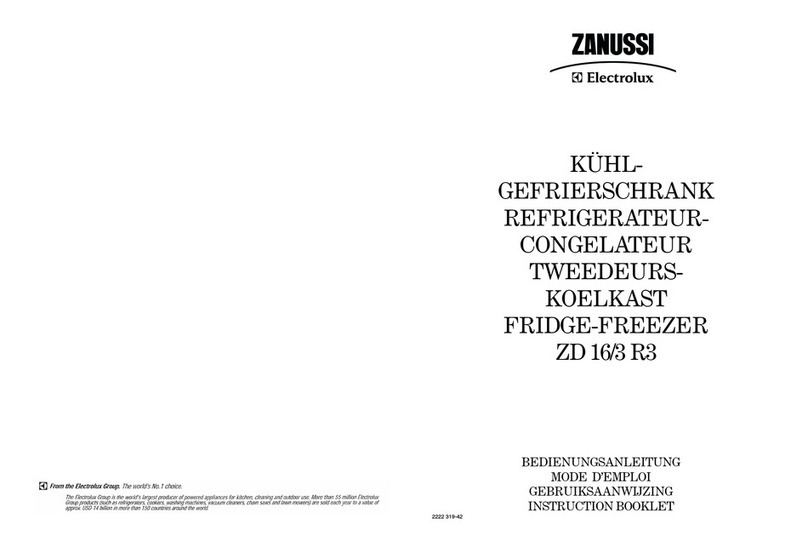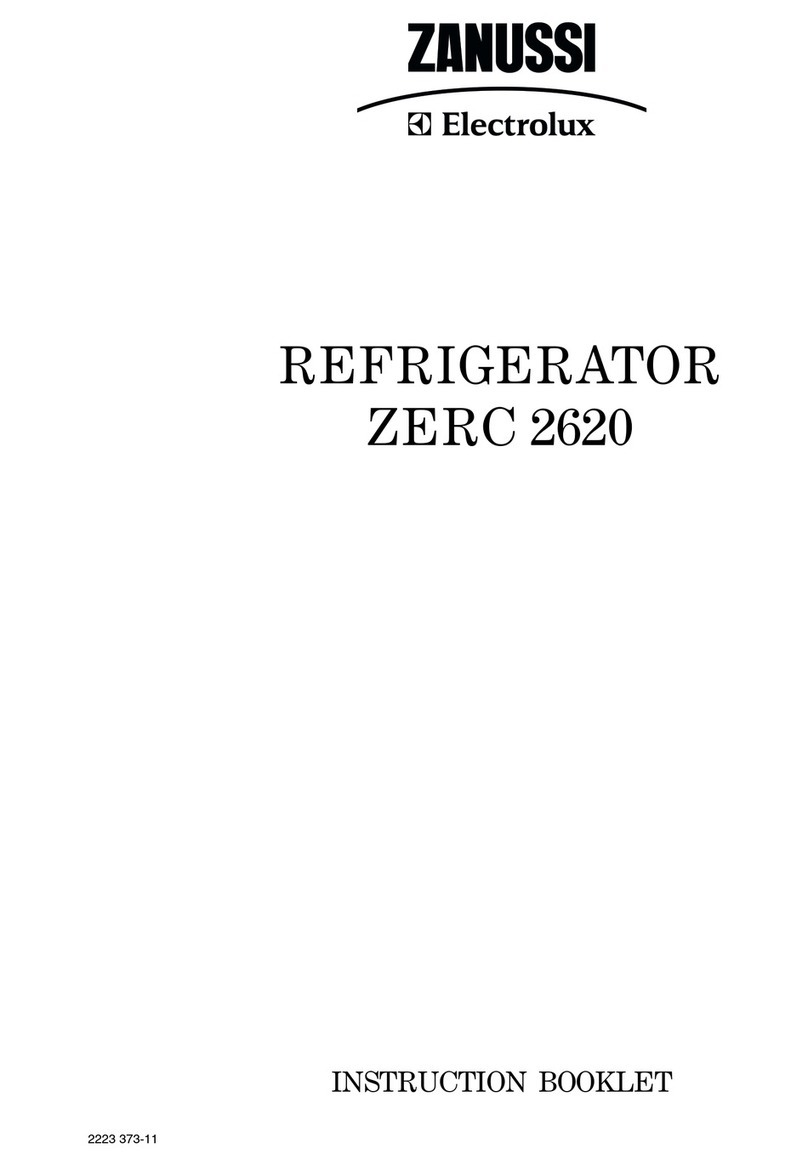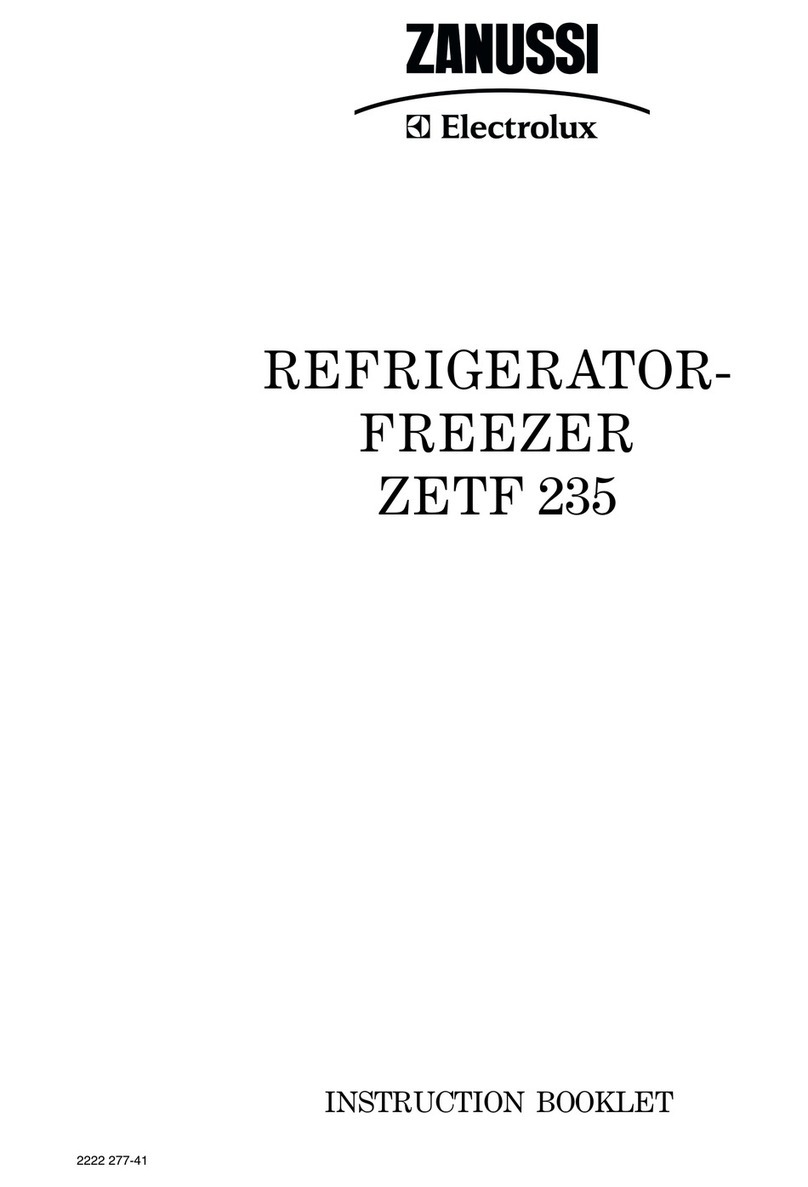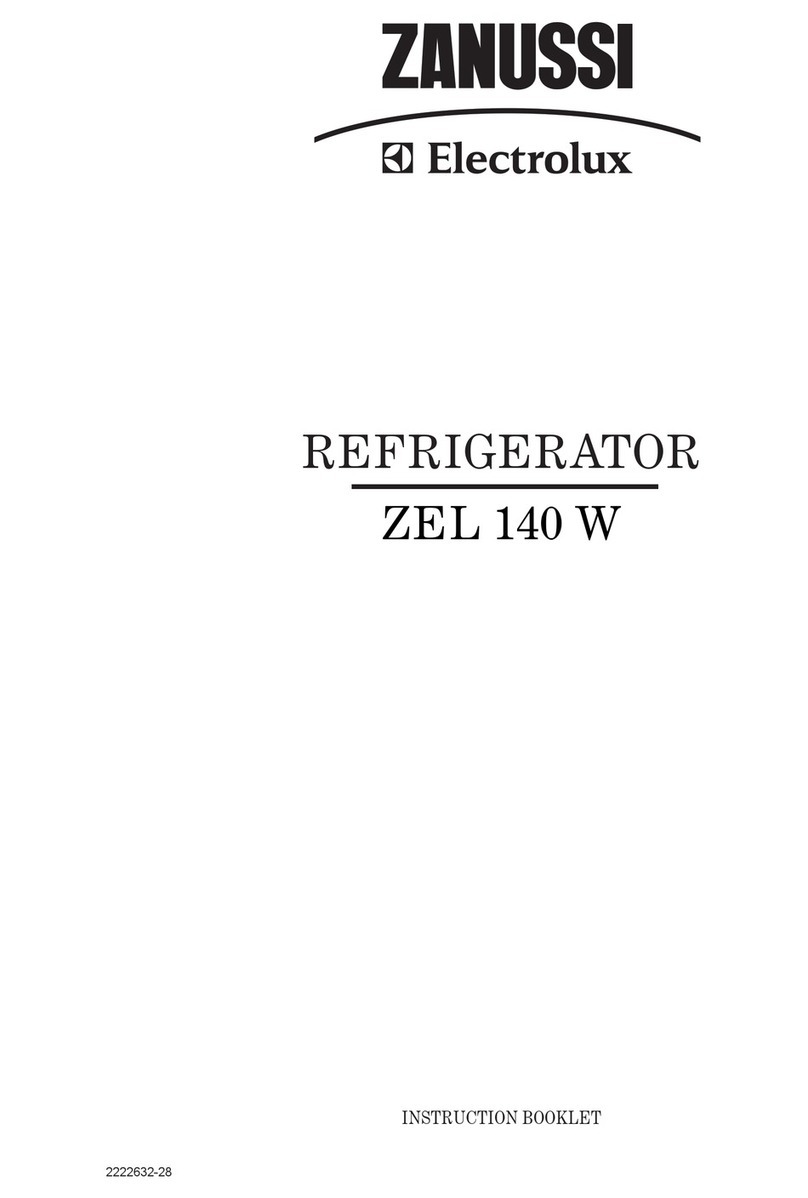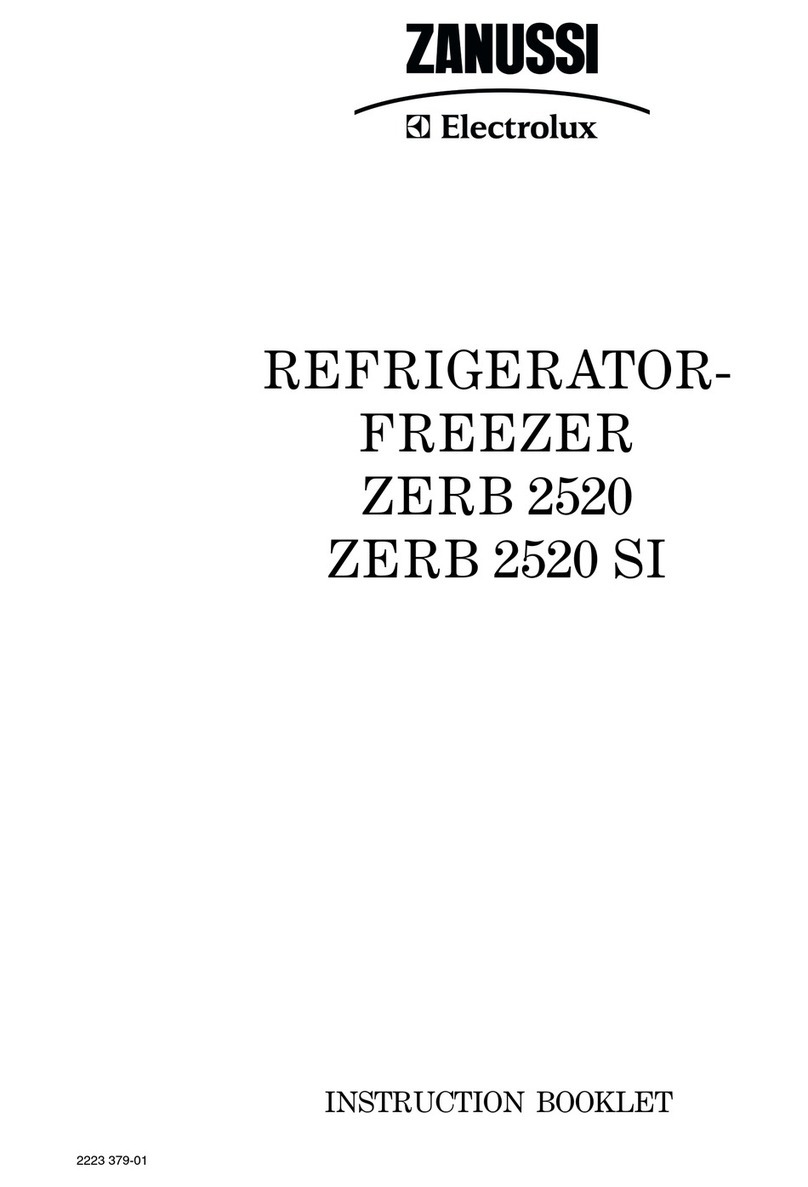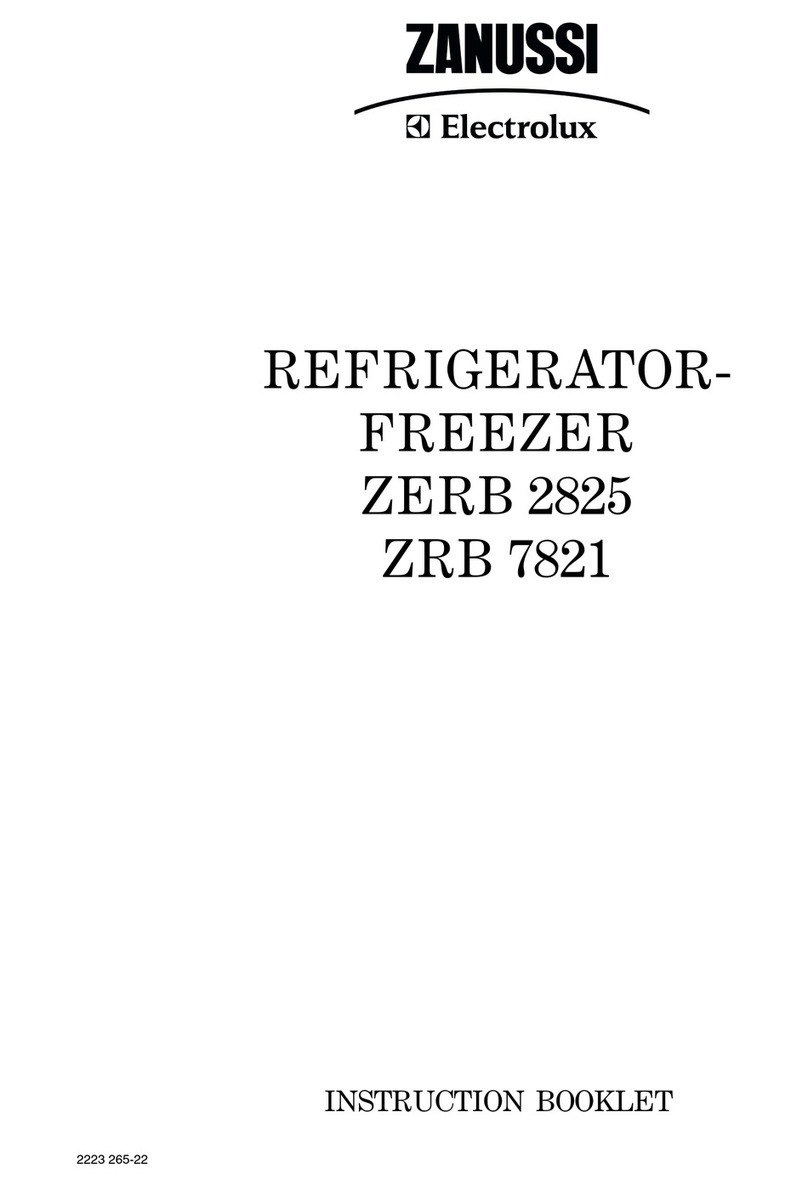55
Im
Impor
port
tant saf
ant safe
et
ty inf
y infor
ormation
mation
Precautions for child safety
Do not allow children to play with the packaging
of the appliance. Plastic foil can ca se
s ffocation.
Ad lts m st handle the appliance. Do not allow
children to play with it or its controlling parts.
If yo are discarding the appliance p ll the pl g
o t of the socket, c t the connection cable (as
close to the appliance as yo can) and remove
the door to prevent playing children to s ffer
electric shock or to close themselves into it.
Safety precautions for
installation
P t the appliance to the wall to avoid to ching or
catching warm parts (compressor, condenser)
to prevent possible b rn.
When moving the appliance take care of the pl g
not to be in the socket.
When placing the appliance take care not to
stand it on the power cord.
Adeq ate air circ lation sho ld be aro nd the
appliance, lacking this leads to overheating. To
achieve s fficient ventilation follow the
instr ctions relevant to installation.
For the safety of life and property keep
the precautions of these user's
instructions as the manufacturer is not
responsible for damages caused by omission
General safety precautions
Keep these instr ctions and they sho ld remain at
the appliance when moving away or changing
owner.
This appliance is designed for storing food,
domestic se and being sed according to these
instr ctions only.
Specialised companies that are qualified to do
so by the manufacturer must carry out service
and repairs including repairing and changing
the power cord Accessory parts s pplied by
them sho ld be sed only for repairing. Otherwise
the appliance can be damaged or can ca se other
damage or inj ry.
The appliance is o t of circ it only in that case if the
pl g is removed from the socket. Before cleaning
and maintenance always npl g it (do not get it by
the cable). If the socket is diffic lt to reach, switch
off the appliance by c tting off the c rrent.
Power cord m st not be lengthened.
Make sure that the power plug is not squashed
or damaged by the back of the fridge/freezer
-A damaged power pl g may overheat and ca se a
fire.
Do not place heavy articles or the
fridge/freezer itself on the power cord
-There is a risk of a short circ it and fire.
Do not remove the power cord by pulling on its
lead, particularly when the fridge/freezer is
being pulled out of its niche
-Damage to the cord may ca se a short-circ it, fire
and/or electric shock.
-If the power cord is damaged, it m st be replaced
by a certified service agent or q alified service
personnel.
If the power plug socket is loose, do not insert
the power plug
-There is a risk of electric shock or fire.
Witho t the lamp cover of interior lighting yo m st
not operate the appliance.
When cleaning, defrosting, taking o t frozen food
or ice tray do not se sharp, pointed or hard
devices, as they can ca se damage to the
appliance.
Be caref l not to allow liq ids to the temperat re
control and lighting box.
Ice and ice-cream can ca se h rt if they are eaten
immediately after removal from the frozen food
compartment.
After dissolving frozen food m st not be refrozen, it
m st be sed p as soon as possible.
Store pre-packed frozen food in accordance with
the frozen food man fact rer's instr ctions.
Yo m st not make defrosting faster with any
electric heating appliance or chemicals.
Do not p t hot pot to the plastic parts.
Do not store flammable gas and liq id in the
appliance, beca se they may explode.
Safety precautions for
isobutane
Warning
The refrigerant of the appliance is isob tane
(R 600a) that is inflammable and explosive to a
greater extent.
Keep ventilation openings, in the appliance
enclos re or in the b ilt-in str ct re, clear of
obstr ction.
Do not se mechanical devices or other means
to accelerate the defrosting process, other than
those recommended by the man fact rer.
Do not damage the refrigerant circ it.
Do not se electrical appliances inside the food
storage compartments of the appliance, nless
they are of the type recommended by the
man fact rer.
GB
Do not store carbonated drinks, bottled drinks
and bottled fr its in the frozen food
compartment.
Check and clean the o tlet of melting water
coming d ring defrosting reg larly - a label
inside the appliance warns yo for this. If it is
clogged the melting water gathered can ca se
earlier fail re.
